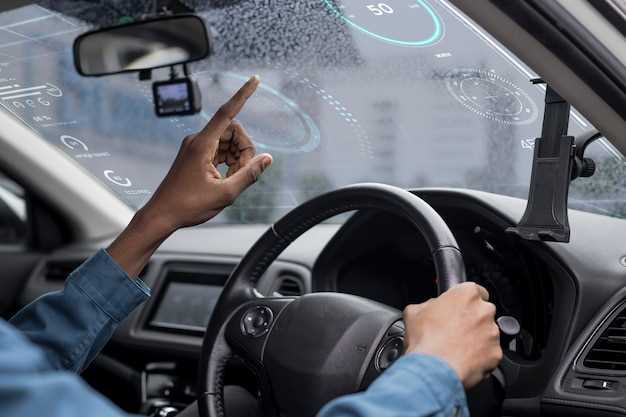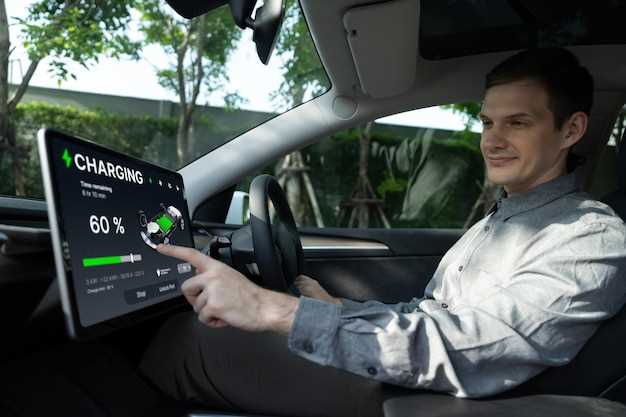
In the competitive world of motorsports, understanding the nuances of driving performance is crucial for success. Telemetry technology has revolutionized how teams analyze data from their vehicles, providing insights that were previously unattainable. By capturing real-time data during a race, teams can fine-tune their strategies and make informed decisions that can mean the difference between victory and defeat.
Telemetry systems collect a plethora of information–ranging from engine performance to tire wear–to assess how drivers interact with their cars on the track. This data is invaluable for engineers and drivers alike, as it facilitates a deeper understanding of both the vehicle’s capabilities and the driver’s skill set. By translating these insights into actionable strategies, teams are better equipped to enhance their overall performance.
Moreover, the integration of advanced telemetry not only aids in identifying areas for improvement but also helps drivers optimize their technique. By analyzing factors such as acceleration patterns, braking efficiency, and cornering speeds, drivers can adapt their driving style to maximize their potential. This data-driven approach ensures that every race becomes an opportunity for growth and refinement, ultimately leading to improved results on the track.
Analyzing Real-Time Data to Optimize Racing Techniques

In the high-stakes world of racing, every millisecond counts. Utilizing advanced telemetry systems, teams are now able to capture vast amounts of real-time data during races. This data encompasses a range of metrics, including speed, acceleration, tire pressure, and engine temperature, allowing for precise adjustments to improve performance.
Telemetry data is transmitted from the race car to the pit crew, where engineers analyze it instantaneously. By monitoring tire performance, for instance, teams can make informed decisions about when to change tires or adjust tire pressures. This real-time feedback loop not only informs strategic decisions during the race but also enhances long-term performance through post-race analysis.
Drivers benefit immensely from this influx of data. They receive live updates about their performance metrics, enabling them to adapt their driving techniques on the fly. For example, if telemetry indicates that a driver is overheating the brakes, they can modify their braking points and techniques, potentially avoiding costly mistakes during crucial moments of the race.
Moreover, analyzing patterns in the telemetry data across multiple races allows teams to develop specific strategies tailored to different circuits. Understanding how track conditions impact vehicle performance helps in customizing setups and enhancing driving styles. Thus, telemetry serves as the backbone for an analytical approach to racing, fostering continuous improvement both on the track and in the workshop.
In conclusion, the integration of real-time telemetry data in racing not only optimizes individual performance but also serves as a keystone in strategic decision-making. By effectively leveraging this technology, teams can enhance their competitive edge, leading to better race outcomes and improved driver development.
Utilizing Telemetry for Enhanced Vehicle Dynamics Understanding
Telemetry plays a crucial role in understanding vehicle dynamics by providing real-time data on various performance metrics. This data encompasses vital parameters such as speed, acceleration, braking force, throttle position, and lateral G-forces, which collectively inform drivers about their vehicle’s behavior under different driving conditions.
By analyzing telemetry data, drivers can gain insights into how their inputs affect vehicle stability and handling. For instance, understanding the relationship between throttle application and vehicle grip can help optimize cornering techniques, allowing for smoother transitions and improved lap times. Additionally, telemetry can reveal how weight transfer impacts braking efficiency, further fine-tuning a driver’s approach to deceleration and cornering.
Furthermore, telemetry enables drivers to compare data across different sessions or vehicle configurations. By assessing variations in driving style and technique, users can identify specific areas for improvement. This systematic approach allows drivers to adopt data-driven strategies that enhance their skills and maximize vehicle performance.
Ultimately, integrating telemetry with vehicle dynamics analysis fosters a deeper understanding of the interplay between driving techniques and vehicle behavior. This synergy empowers drivers to make informed decisions that enhance not only their own performance but also the overall effectiveness of the vehicle on the racetrack or road.
Implementing Feedback Loops for Continuous Improvement in Driving

In the competitive world of motorsports, drivers and teams increasingly rely on telemetry to gather critical data that informs their performance. By implementing feedback loops, drivers can continuously refine their skills based on real-time insights derived from telemetry data. This process transforms raw data into actionable information, enhancing the overall driving experience and ensuring better race outcomes.
A feedback loop begins with the collection of telemetry data during practice sessions and races. This data encompasses various parameters, such as speed, acceleration, braking force, and tire performance. By analyzing these metrics, drivers can identify areas where they excel, as well as aspects that require improvement. Immediate access to this information allows drivers to make informed decisions quickly, fostering a culture of continuous enhancement.
Once data is gathered, it must be analyzed to extract meaningful insights. Tools and software dedicated to telemetry analysis can highlight specific driving behaviors, such as cornering habits or throttle application. By establishing a connection between telemetry and performance, drivers can pinpoint precisely where adjustments in their technique are necessary to improve lap times. Frequent reviews lead to a deeper understanding of vehicle dynamics and driver capabilities.
Furthermore, feedback loops create an ongoing dialogue between drivers and their coaches or engineers. Regular debrief sessions allow for collaborative analysis of telemetry data. Coaches can provide guidance on how to adjust driving style based on the insights gained from the telemetry, fostering an environment where drivers are encouraged to experiment with new techniques and strategies.
Incorporating simulation tools into this feedback loop can further enhance the learning process. Drivers can practice refined techniques in a controlled environment, applying lessons learned from telemetry analysis without the pressures of a live race. This iterative approach enables them to practice, receive feedback, and improve before the next competitive event.
Ultimately, successfully implementing feedback loops powered by telemetry data leads to incremental, cumulative improvements in driving performance. Such a systematic approach not only enhances individual driver skills but also contributes to the success of the team in the highly competitive racing arena. By recognizing driving as a dynamic skill set that can be honed through meticulous analysis and feedback, drivers position themselves for sustained success in their racing careers.



